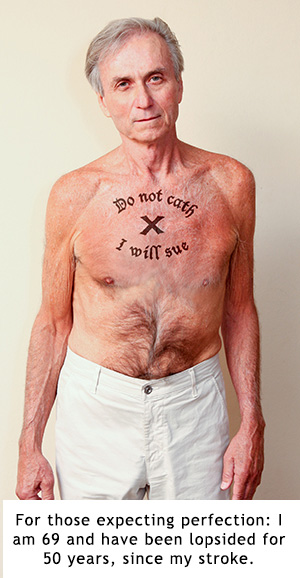And it explains why the doctor has looked like crap the past year. Here's a small excerpt:
On March 16, 2015, during the hours following the McDougall Advanced Study Weekend I developed a viral infection that affected my inner ears. I totally lost my hearing, my balance was disturbed, and I became very weak. At about midnight I walked to the bathroom, lost all control of my muscles, fell down to the floor onto my buttocks, and was unconsciousness for a few minutes. I woke with severe pain. With Mary's help I managed to return to bed. She wanted to call an ambulance, but I refused. I knew what could happen. I would be taken to the hospital, x-rayed, and found to have fractures of my lower vertebrae, pelvis, and a spiral fracture of my left femur (I knew this by the way I felt).
Treatments of my fractures, including surgery may have been planned. But that was a minor concern of mine. I was afraid of what else might happen to me once under medical care.
In my nearly defenseless condition, they would have wanted to know the condition of my heart before anything else would be done. This decision for them would be easy to justify: after all, I was an elderly male (67) and I had a past history of serious atherosclerosis, having suffered a major stroke at age 18. I have no doubt that there are old blockages (scars) in my arteries that developed as a young man eating the Western diet (my highest cholesterol had once been 338 mg/dL). Twenty years ago I had a CT heart scan (performed out of curiosity) showing significant amounts of calcification in my coronary arteries demonstrating that I had atherosclerotic plaque disease. These blockages were, however, old fibrous scars. Since I changed my diet at age 27 my cholesterol has dropped to below 150 mg/dL and I am confident that no new disease has formed. But the scars (with calcium in them) remain for a lifetime.
The plaques found on my heart scan are healed, stable, non-lethal, and of no risk to me—unless they were to be discovered and treated by a cardiologist or a bypass surgeon. If I would have gone to the hospital after my fall in March of 2015, I would have been facing the standard practice of prophylactic revascularization: angioplasties with stents placed before any other treatment to my bones would be provided. Remember, I refused to go to the hospital so I avoided this common scenario. I healed at home.
Before continuing, I would like to tell you my outcome. My hearing has completely returned to normal and my balance is pretty good. It took about three months for my fractures to heal and after six months I was almost pain free. I can say I am back to 100% a year after this near tragedy. But, how do I protect myself in the future from unnecessary investigations of my heart if I have an accident that leaves me unable to defend myself? Have a tattoo written on my chest?

No comments:
Post a Comment